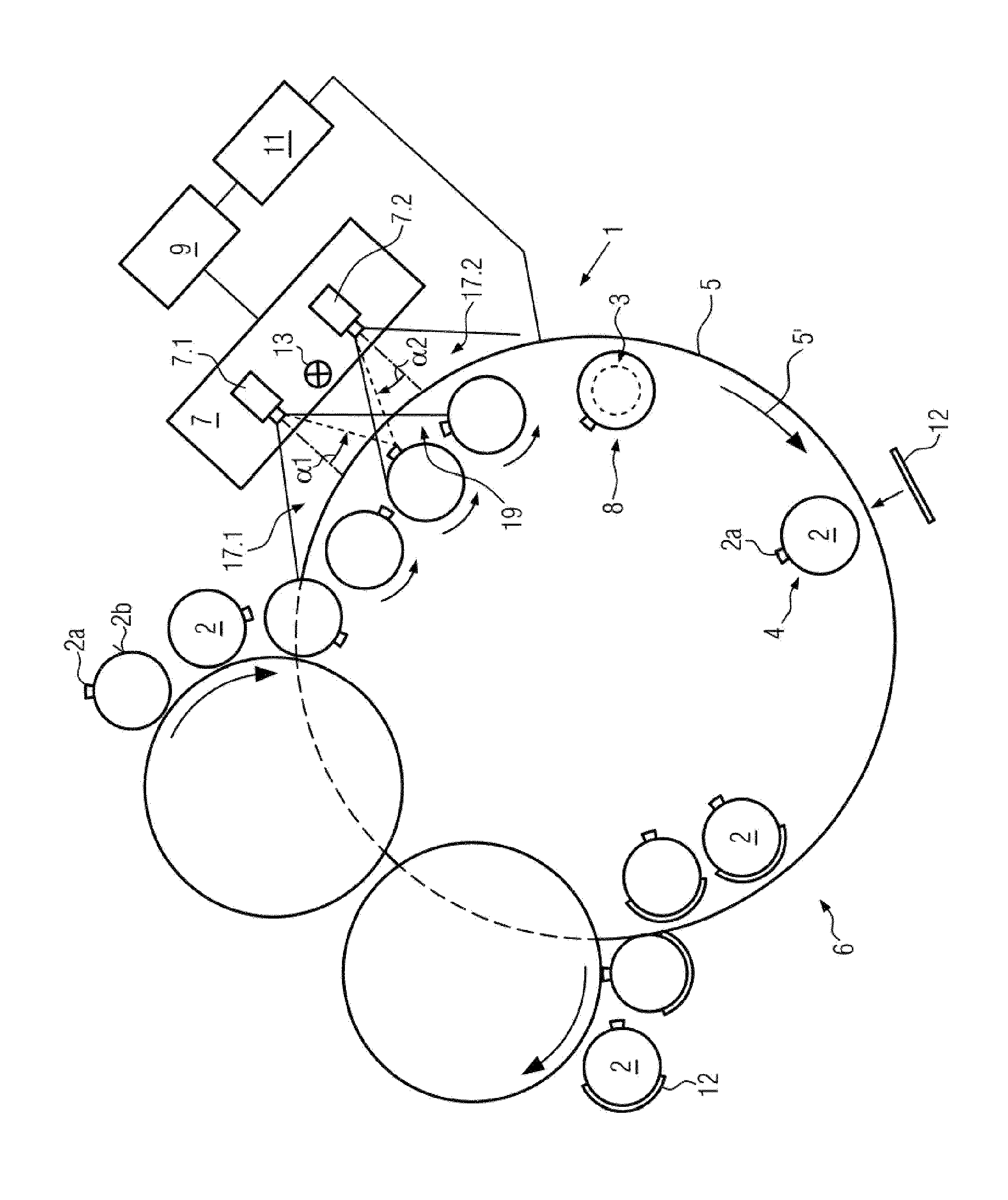Device and method for aligning containers
a container and device technology, applied in the field of devices for aligning containers, can solve the problems of insufficient accuracy or reliability, the inability to determine the actual rotary position of the container, and the inability to determine the position and/or rotary position of a relief-like feature on the container surface, etc., to achieve space-saving and precise labeling operation, reduce measurement errors, and minimize the error of the accessed target rotary position
- Summary
- Abstract
- Description
- Claims
- Application Information
AI Technical Summary
Benefits of technology
Problems solved by technology
Method used
Image
Examples
Embodiment Construction
[0029]As can be seen from the only FIGURE, which shows a schematic top view, a preferred embodiment of the device 1 for aligning containers 2, such as beverage bottles or the like, according to the present disclosure comprises a plurality of rotatable holders 3 for receiving, holding and aligning the containers 2 so as to bring them into a target rotary position 4 for a subsequent processing step, in particular for labeling the containers 2. The holders 3 comprise e.g. turntables or the like, which are concealed in the FIGURE by the respective containers 2. The containers 2 move along a conveying path 5, which may e.g. be a constituent part of a carousel-like labeler 6, along a camera system 7 oriented substantially tangentially to the conveying path 5. In the course of this movement, the containers 2 are rotated about their main axis and imaged, preferably in a full-circumference imaging mode, at different rotary positions. The respective actual rotary positions 8 of the containers...
PUM
| Property | Measurement | Unit |
|---|---|---|
| object angles | aaaaa | aaaaa |
| object angles | aaaaa | aaaaa |
| object angles | aaaaa | aaaaa |
Abstract
Description
Claims
Application Information
 Login to View More
Login to View More - R&D
- Intellectual Property
- Life Sciences
- Materials
- Tech Scout
- Unparalleled Data Quality
- Higher Quality Content
- 60% Fewer Hallucinations
Browse by: Latest US Patents, China's latest patents, Technical Efficacy Thesaurus, Application Domain, Technology Topic, Popular Technical Reports.
© 2025 PatSnap. All rights reserved.Legal|Privacy policy|Modern Slavery Act Transparency Statement|Sitemap|About US| Contact US: help@patsnap.com


